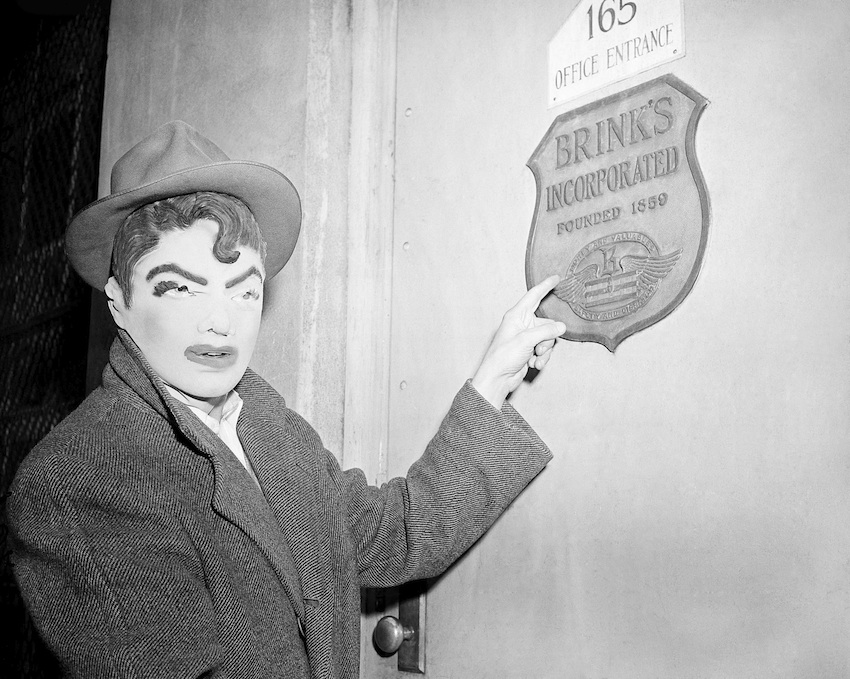Throwback Thursday: The Crime of the Century

A reporter wears a rubber mask similar to those worn by the Brinks robbers. Photo via Associated Press
Around 7:30 p.m. on January 17, 1950, several armed men in Halloween masks walked out of the Brinks building on Prince Street in Boston with $1,218,211.29 in cash and $1,557,183.83 in checks, money orders, and other securities. It was, to that date, the largest robbery in American history, known soon after as the “crime of the century.”
As befitted its instant reputation, the deed was no small idea. It took years of meticulous planning. As the FBI recalls in a long essay on the case, the gang members went to impressive lengths to ensure that the heist would go off without a hitch. They snuck into the building after hours and temporarily removed the cylinders from locks to make copies of keys. They broke into an alarm company in Boston and stole a copy of the Brink’s building’s security. They observed the movements of company employees from across the street. They practiced driving the escape route.
On January 17, several robbers entered the building wearing peacoats, gloves, chauffeur’s caps, and of course, Halloween masks. After opening several locked doors, they bound five employees who were storing the money and taped their mouths shut. “The robbers did little talking,” the FBI writes. “They moved with a studied precision, which suggested that the crime had been carefully planned and rehearsed in the preceding months.”
After walking out with the cash, the robbers sped away and dispersed to establish their alibis. The FBI had only the accounts from the employees, the rope and tape used on them, and one chauffeur’s cap left behind.
With few physical clues and even fewer leads, the FBI had trouble advancing their investigation for years, arriving at a series of dead ends. The gang was eventually caught, not because of mistakes made during the robbery, but rather, because they got in trouble for subsequent crimes and fell prey to infighting. Finally, the FBI convinced James O’Keefe, in jail and embittered, to confess and implicate his co-conspirators. In 1956, shortly before the statute of limitations on some of the crimes would expire, the FBI rounded up and arrested many of the gang members. That surely wasn’t a great result for any of them; they were sentenced to life in prison. But at the very least, it gave the FBI and the insatiably curious public a chance to hear just how they’d pulled off such an impressive crime. Years later, it remained one of the most famous in 20th century history, inspiring more than one movie and book, and an occasion, each January, to remember an impressive robbery.


